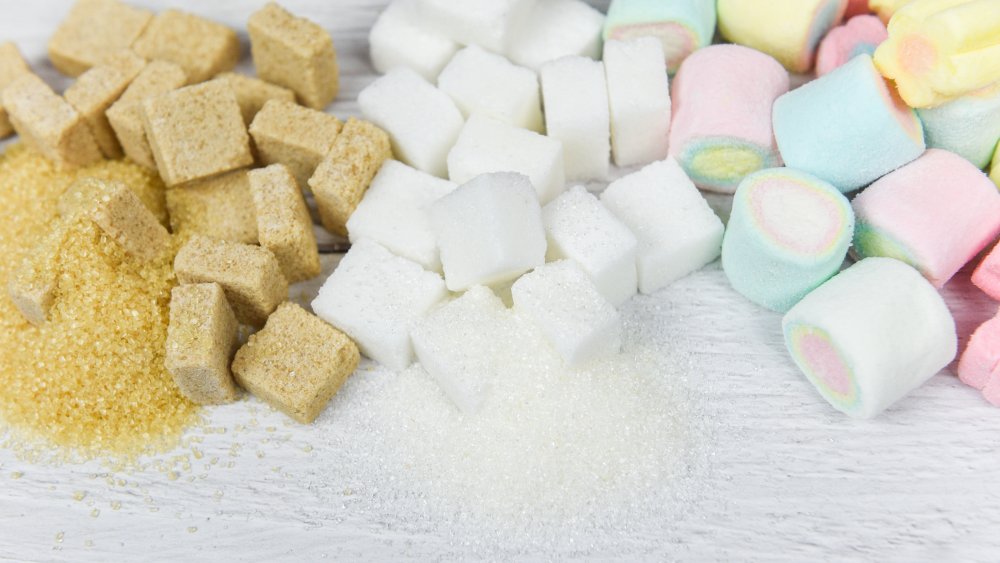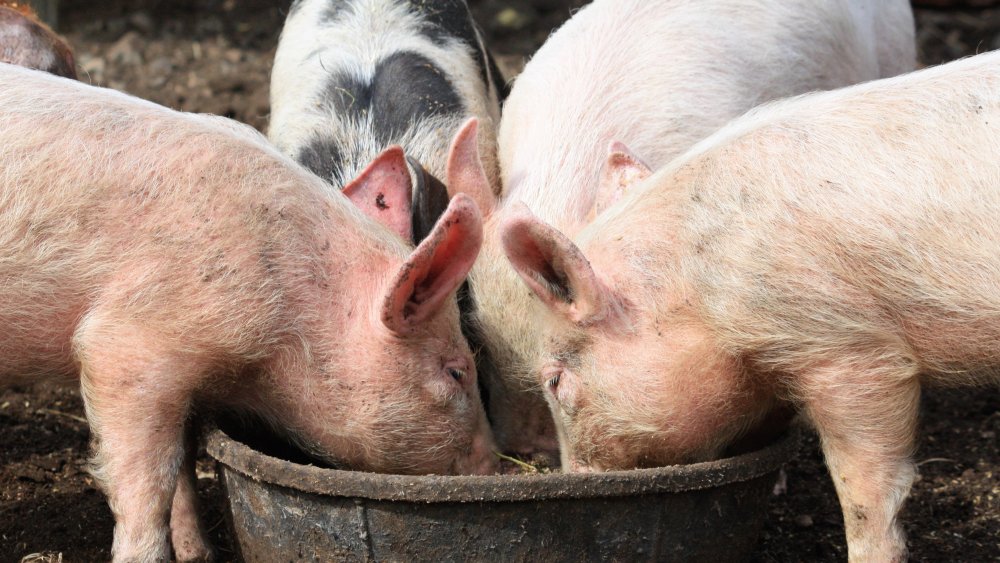The Original Purpose Of Sugar May Surprise You
If sugar was a movie star, it'd be like Tom Hanks, omnipresent, smooth, and able to gift any production featuring it with an intangible je ne sais quoi, bringing the whole thing to another level. Like Hanks, sugar certainly deserves an Oscar or two, but before sugar made it to the big screen, it dabbled around in the playhouse. Prior to starring roles in treats like caramel, tiramisu, eclairs, and all the other things that make life worth living, sugar (or more specifically sugarcane, the plant that sugar is made from) made a much smaller cameo appearance in human existence. We're talking 9,000 years ago when — in South East Asia (perhaps specifically Papua New Guinea) — sugarcane first made it's debut as an intentionally harvested crop. Back then, and depending on the variety harvested, inhabitants of sugarcane-rich regions would use high-fiber canes for construction purposes. Softer canes may have been used for chewing, but were more likely used to feed and fatten pigs (via The Conversation and LSU AgCenter).
Using sugarcane as livestock fodder is not as far-fetched (or as antiquated) as it might sound. The Food and Agriculture Organization notes that pigs have been successfully fattened on cane juice instead of cereals in Mexico, the Dominican Republic, and Colombia. In Cuba, by feeding roughly 24 pounds of unpeeled sugarcane stalks paired with 200 grams of protein to their pigs each day, certain small-scale farmers were able to fatten their pigs by roughly a pound a day (via Feedipedia).
How sugar made the transition from pig food to dessert ingredient
People in India first figured out how to refine sugarcane into a relative of the crystals we find packaged in our supermarkets today (via The Sugar Association). After inventing the sugar mill, Saveur states Indians started adding the sweet crystals into rice puddings, sweet barley meals, and fermented drinks with ginger; but it's probable that the Indians first conceptualized the stuff not as a dessert, but as medicine. When ancient Greeks and Romans traveled to India, maybe bearing wines and olive oils to trade, they brought sugar back with them.
It is, perhaps, the Persians that you can truly thank for sugar's status, not as pig food, but as our favorite sweetener. When they, along with Greek, Christian, and Jewish scholars, began studying Indian sugar production (literally, at a University in Iran), they not only improved upon Indian refining methods, but they started using it for more decadent purposes. Almond meal, mixed with sugar, became marzipan, perhaps he world's first sugar-centric candy and a delicacy reserved for only the most privileged. Finally in Egypt, sugar achieved the snow white, crystalline structure we know today, around the year 650.

